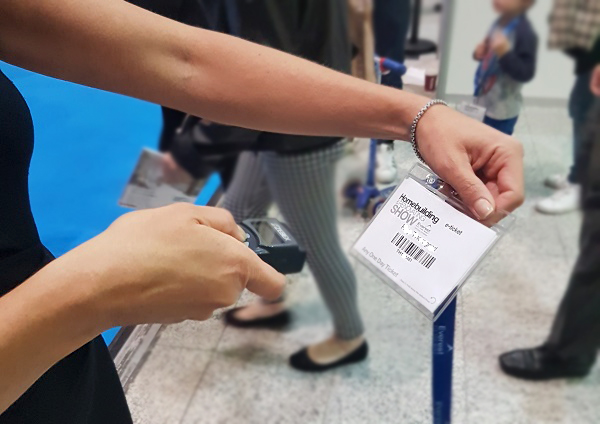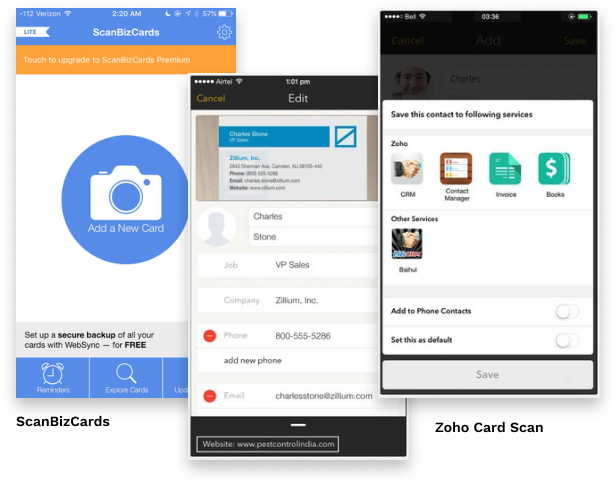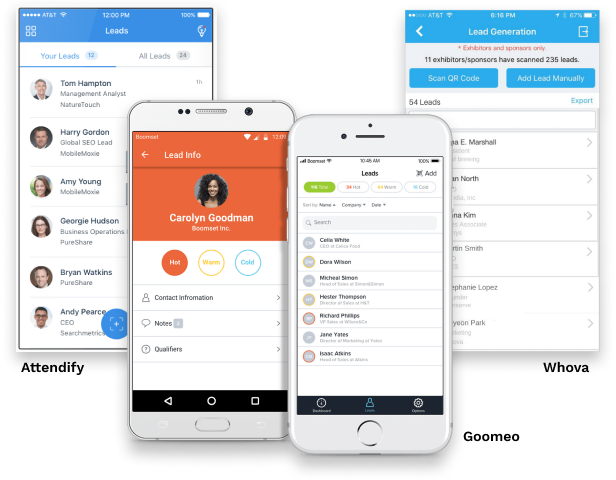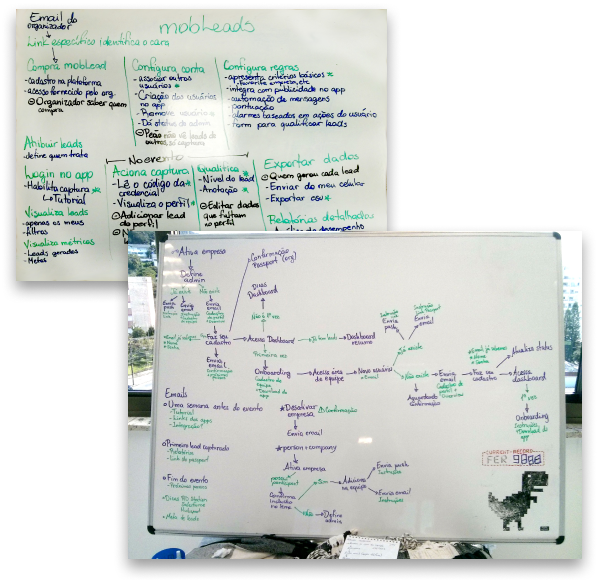The solution
The new feature would be completely integrated with the event app already provided. It made use of the phone camera to read the event badge code to identify the participant and then create a lead for the exhibitor based on and linked to the attendee profile in the app.
The system already had all the exhibiting companies information for the app exhibitor’s guide. Organizers could then activate the feature for the companies that had purchased it, creating a team of users who had access to said feature. The concept of a team was important to overall performance analysis for managers.

New exclusive area and quick access
As part of a lead retrieval team, people had access to a new menu with the list of all leads from their team and a simple performance report. Because it was important for the process to be fast, I added a quick access button to the app home page. This way, even if the app was closed, they could access the badge scan as soon as it loaded.
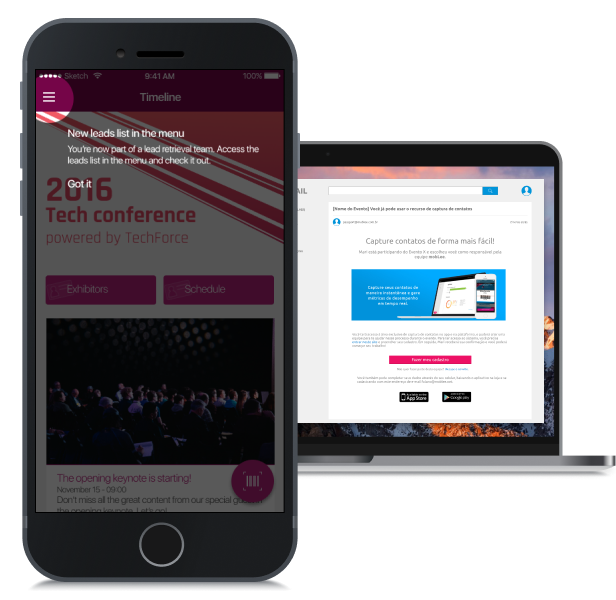
Special attention to onboarding
This feature would be hidden in the app until the user was added to a team. We needed to introduce it to the exhibitors who already had the app installed and guide exhibitors who hadn’t on how to create their app account to use it.

Real-time data from attendees' profiles
When exhibitors scanned a barcode or QR code on an attendee’s badge they would get their profile information in real-time. They could quickly confirm if all data was correct and not lose any information. Data would be up-to-date with the attendees' profile and linked to it for messaging within the app.

Context and ratings
The help of our CEO and sales team was crucial to understanding how CRM softwares deal with lead data and bringing some of this information to our product. Because context was essential, besides the basic profile information, we also added a field for comments and rating. The rating had the objective of prioritizing contacts and segmenting them.

Reports and goal management
Exhibitors had access to reports showing the number of leads collected, the average lead rating and the individual team members’ performance. After the event, they could easily manage any duplicate leads and export all their lead data for upload in their own CRM. With both the app and the web platform, exhibitors could adapt to each moment of the event.

Complete view of the event
Organizers have a view of all the companies' performance. During the event, organizers could provide help to any teams they noticed who were underperforming. After the event, they could access the web platform for final results for any reports or negotiation.

